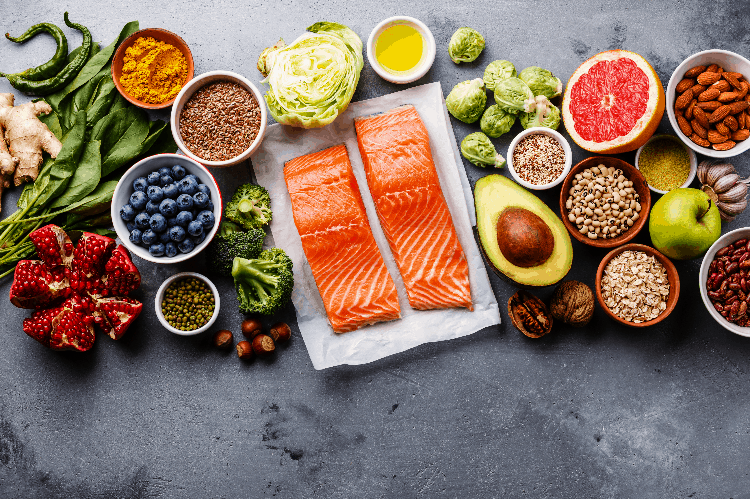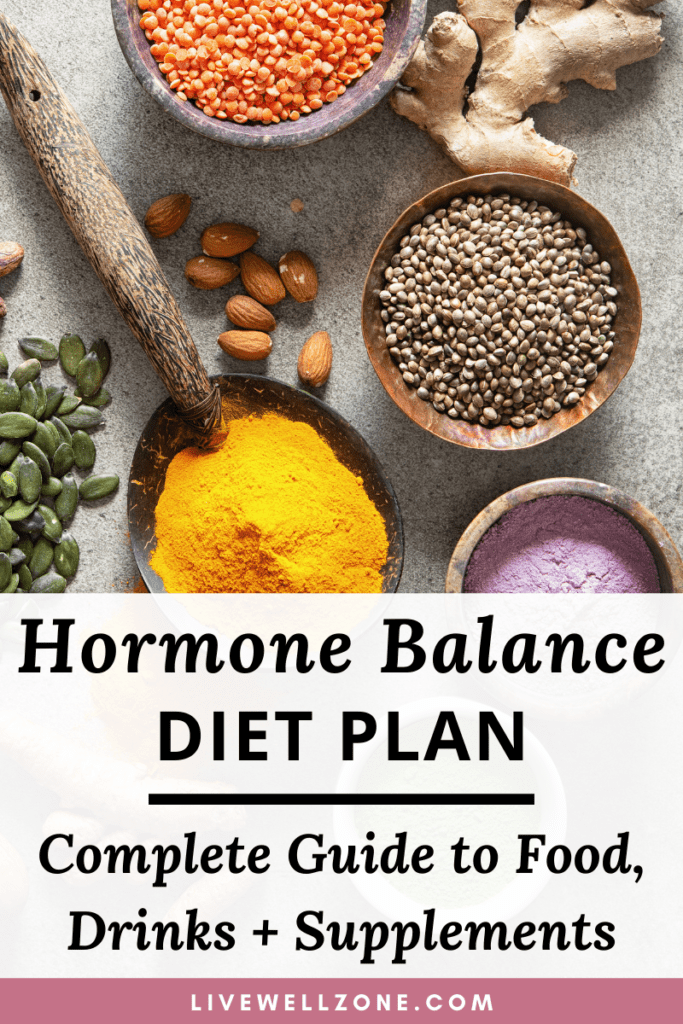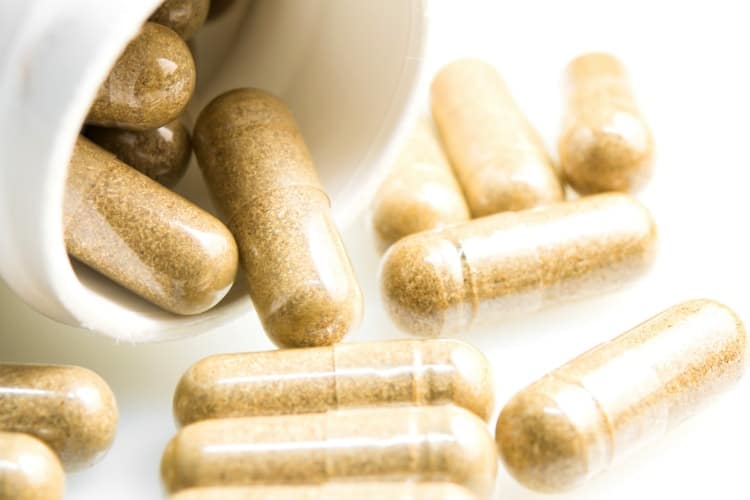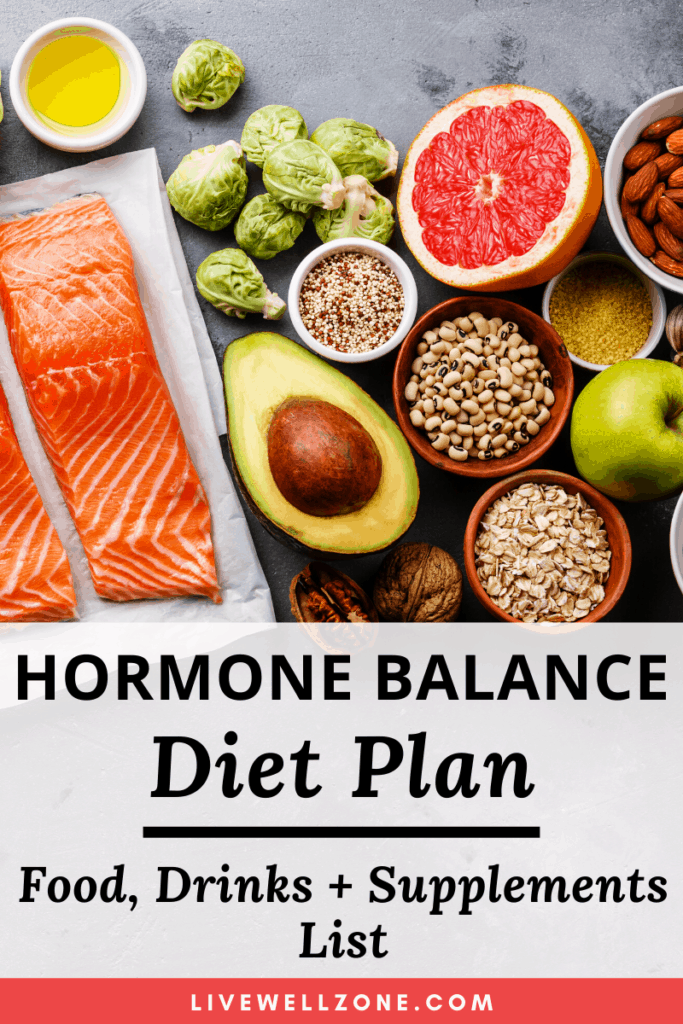The Hormone Cure Pdf Free Download

Whether you're trying to lose weight, support your body through peri/menopause or get rid of acne, one of the most impactful things you can do is to follow a hormone-balancing diet plan.
Of course that's easier said than done! One of the tricky things about eating for your hormones, is that it requires us to drop many of the diet "tricks" that we've been taught. For example, worrying about calories…our hormones don't care about calories (which is why we can cut calories and yet, still gain weight).
Instead, eating for your hormones is about focusing on nutrient density.
Another way of thinking about nutrient density is in terms of nutrient variety. So, imagine you have to choose between 2 foods.
Food A is very high in protein, but quite low in other nutrients. Meanwhile Food B has pretty good protein content, as well as vitamins, minerals, antioxidants, fiber and so on.
Food B is the more nutrient dense of the two because it has a wider variety or spectrum of nutrients. Favoring these types of foods is the key to transforming your hormones through food.
So, with this perspective in mind, this article is going to walk you through:
- the best foods to eat for hormone balance.
- supplements that can help to support your hormones.
Last but not least, you're also going to get a printable (PDF) hormone-balancing diet plan food list that you can use as a reference.
Note: this post contains affiliate links and I earn a commission (at no additional cost to you) if you use them to make a purchase.
FOOD LIST FOR A HORMONE BALANCE EATING PLAN

The two most significant things you can do for your hormones is to eat foods that are:
- Whole and nutrient-dense: because nutrients are the raw material that the body uses to make hormones, detox excess hormones and basically, everything else in the body.
- Organic: because the pesticides used in non-organic farming can have an estrogenic effect and can also contribute to inflammation.
That said if 100% organic is simply not feasible for you right now, don't worry about it. You can go organic only for the most high priority stuff (I highlight them for you in the list below) and then do non-organic for everything else.
Now let's get into the food list!
1. Plant Proteins
Eating more plant proteins and less animal proteins is an important part of supporting your hormones.
The best plant proteins to choose from are:
- chickpeas
- lentils
- red beans
- black beans
- pinto beans
- cannellini beans
- lima beans
- quinoa
- broccoli
- peas
Soy products, like tofu and edamame, are also good sources of protein.
However, soy can worsen hormonal imbalance for some women.
Even though some put the blame on soy's phytoestrogens, I have another theory.
Most of the soy on the market is genetically modified.
And genetically modified soy is designed to withstand pesticides.
This means that GMO soy is actually sprayed with a lot more pesticides than non-GMO soy.
End result? Your soy products will have higher pesticide residue.
So, when it comes to soy, you can:
- either avoid it completely or proceed cautiously.
- choose organic for those times when you decide to consume it.
- eat more fermented forms of soy instead (such as natto, tempeh, miso, fermented tofu). Many Asian cultures that benefit from the health benefits of soy eat mostly fermented soy (it's the opposite in the U.S. and most of the West).
2. Probiotic-rich Foods
Fermented foods contain probiotics which increase the amount of friendly bacteria in your gut.
This goes a long way for hormone health because the gut makes hormones and also plays a role in detoxification.
Some probiotic-rich foods to choose from are:
- coconut yogurt
- sauerkraut and other fermented veggies
- organic yogurt (sparingly)
3. Gluten-Free Grains
Although wheat isn't inherently bad, it can be inflammatory for some people. And most of all, the ways in which wheat is grown and processed nowadays can contribute to inflammation.
Since inflammation increases cortisol and puts added stress on the adrenal glands, it's often a good idea to stay away from gluten-containing grains while your body is recovering.
Some gluten-free grains to include in your diet are:
- rolled oats
- brown rice
- white rice
- quinoa
- spelt
- amaranth
- buckwheat
- millet
- teff
- sorghum
4. Whole Fruits and Veggies
When it comes to fruits and veggies, get them fresh or frozen.
Just make sure to check the label when buying them frozen – the ingredients should be the fruit only. NO preservatives or additives.
Fruits and veggies contain various antioxidants, vitamins and minerals that the body needs.
So eating a variety of them will give you a wider variety of nutrients.
FRUITS (this is just a selection; use what's available in your area or in season):
- strawberries
- blueberries
- blackberries
- dates
- figs
- watermelon
- peaches
- mangoes
- bananas
- cherries
- pineapples
- tomatoes
- avocados
- pomegranates
- lemons
- limes
- raspberries
- oranges
- apples
- pears
- kiwi
- grapefruit
- apricots
- peaches
- clementines
- tangerines
- coconuts
- grapes
- papayas
- melons (honeydew, cantaloupe, hami, etc.)
VEGGIES
All veggies are good for you, fresh or frozen
However, when your hormones are out of whack, increase your consumption of cruciferous veggies.
They contain sulfur, which the body uses to make glutathione.
Glutathione is a major detoxifier and it binds to toxins, then removes from the body.
Cruciferous veggies to choose from:
- cabbage
- cauliflower
- broccoli
- kale
- radishes
- arugula
- bok choy
- collard greens
- mustard greens
- brussel sprouts
- garden cress
- rutabaga
- turnips
- kohlrabi
Aside from the above, rotate in other vegetables to once again cover all your nutritional needs. Choose from:
- cucumbers
- spinach
- mustard greens
- carrots
- celery
- artichokes
- asparagus
- endives
- green beans
- peas
- squash
- eggplant
- tomatoes
- carrots
- dandelion greens
- fennel
- leeks
- mushrooms
- onions
- garlic
- bell peppers
- potatoes (sweet, red, yukon, japanese purple)
- snow peas
- snap peas
- beets

5. Spices, Herbs and Salts
Not only do spices, herbs and salts contain nutrients, but some (like cilantro, parsley, ginger or turmerics) are known to detox the body, and fight inflammation.
Feel free to use any herbs and spices that you enjoy.
Here's a shortlist to start you off:
- pink himalayan salt
- red hawaiin salt
- pure, unrefined sea salt
- ginger
- cilantro
- parsley
- cinnamon
- clove
- oregano
- thyme
- nutmeg
- black pepper
- cayenne
- mint
- turmeric
- marjoram
- rosemary
6. Fatty Fish
Fatty fish contain omega-3 fatty acids which the body needs to:
- Make hormones
- Fight inflammation
When choosing your fish, stay away from farmed fish.
It contains a whole lot of chemicals that your body simply doesn't need.
Instead, go for wild-caught fish.
Choose from:
- salmon
- sardines
- mackerel
- seabass
- trout
Your total consumption of both fish and other meat should be no more than 3 times a week.
7. Organic Meat
We've already established that conventional meat contains compounds that interfere with hormone health.
So, when buying any type of meat go for organic, antibiotic-free and hormone-free varieties.
You can choose from:
- grass-fed beef
- chicken
- turkey
- lamb
Also, be aware that meat takes a lot more effort to digest (compared to plant proteins or even fish). And since we want to reduce the amount of stress on the body, it's important to consume meats just a few times a week. I generally suggest no more than 3 times a week in total.
In addition, while we're on the topic of meat, bone broth is a fantastic source of healing nutrients for the gut. It's packed with minerals and 17 different amino acids – including collagen (source)!
And unlike eating actual meat, bone broth is easy on the digestive system because it's a liquid.
So, definitely consider adding bone broth to your hormone balance diet plan. You can make your own or buy it – but just make sure it's made from the bones of grass-fed, antibiotic-free and hormone-free cows.
8. Plant-based Milk
Plant-based milks are a healthier, anti-inflammatory source of proteins compared to cow milk.
So, it's a good idea to choose from one or more of these milks as your support your body's healing:
- almond milk
- oat milk
- cashew milk
- macadamia nut milk
- rice milk
Be aware that many brands use undesirable additives and preservatives in plant milks.
Shop around for clean brands like Three Trees.
Or make your own.
However, if neither of the above options are practical, then just buy what's available to you.
As long as you're reducing your toxic load from other sources and eating other nutrient-rich foods, your body will make progress.
9. Cold-Pressed Cooking Oils and Fats
When it comes to oils, you simply want to go for cold-pressed, non-hydrogenated ones. Choose from:
- grapeseed oil
- palm oil
- organic butter
- ghee
- avocado oil
- olive oil
- coconut oil
- hemp seed oil
10. Gluten-Free Baking Flours
Earlier we talked about eating gluten-free grains to keep stress and inflammation low. The same thing applies to flour.
Favor gluten-free varieties as much as possible:
- almond flour
- coconut flour
- garbanzo flour
- brown rice flour
- spelt flour
- buckwheat flour
11. Raw Nuts and Seeds
Raw nuts and seeds are excellent sources of proteins, as well as healthy fats, which are needed to make hormones, as well as to support the gut and liver.
The main ones to add to your diet include:
- almonds
- walnuts
- macadamias
- cashews
- peanuts
- chia seeds
- flax seeds
- sesame seeds
- pumpkin seeds
- sunflower seeds
12. Natural and Unrefined Sweeteners
Refined sugar is one of the most pro-inflammatory, hormone-disruptive foods in our food supply.
For hormone health, use only natural and unprocessed sweeteners, such as:
- raw honey
- maple syrup
- molasses
- unrefined green stevia leaves or powder (NOT stevia drops or other types of refined white stevia)
- date sugar
VITAMINS AND SUPPLEMENTS TO SUPPORT YOUR HORMONE BALANCE MEAL PLAN

While supplements are not a substitute for a healthy diet, they can help you to start feeling better faster, while also filling in nutritional gaps from your pre-existing diet.
Here's are are 3 different supplement types that can be helpful for hormone health.
1. Daily multivitamin and multi-mineral formula
If you use nothing else when it comes to supplements, then at least use this.
A complete multivitamin and multi-mineral formula is exactly what the name implies: a supplement that provides the full spectrum of 90 essential vitamins and minerals that every human body needs.
My favorite for many years now has been BTT 2.0 (Beyond Tangy Tangerine 2.0)
2. Herbal formula for women
The reproductive organs, digestive system (particularly, the liver) and nervous system all play a significant role in balancing hormones.
And one of the best ways to support those systems is with herbs.
My favorite, all-around herbal blend for women is called Women's Balance.
3. Detoxifying and nutrient-dense powder
Wheatgrass, spirulina, moringa and chlorella are a few greens that are particularly high in nutrients and detoxifying compounds.
They can be tricky to include in everyday meals.
So I like using them in a powder blend.
For this, my top choice is Green Juice Powder, which contains all of those greens and a few other healing ingredients.
Now, there's no shortage of products on the market that fit into the above categories.
So, if you have a good quality supplement brand that you already like to use, then you can buy from them.
Otherwise, go ahead and check out my personal favorites in this article on supplements for female hormonal imbalance.
HORMONE BALANCING FOOD PLAN FOR MENOPAUSE
Although each woman's experience with menopause is unique, some of the major concerns that many women face include:
- weight gain.
- heavy periods during perimenopause.
- hot flashes.
- low estrogen.
Regardless of your symptoms, the basic hormone-friendly food list that we've looked at is an important foundation.
Now if you're wondering whether you should eat more estrogen-rich foods, the answer really depends on the results of your hormone tests.
You see, contrary to popular belief, low estrogen is really only a factor during actual menopause. During the transitory/perimenopause phase, estrogen can actually be quite high. Some research even shows that estrogen can be higher than it's ever been!
I talk a lot more about this in my guide to estrogen dominance during perimenopause and this guide to going through menopause naturally. So read those articles for all the details.
But for now just know that loading up on estrogen-rich foods isn't automatically necessary during menopause.
However, if you do need to consume more plant estrogen then reach for foods like soy and flax seeds, as well as herbs like red clover.
PRINTABLE (PDF) HORMONE BALANCING EATING PLAN
Now it's time to put everything we've covered into action! I've put together a free, download that includes the list of hormone-friendly foods to eat, as well as a summary of the guidelines.
Grab your free cheatsheet here and print it out whenever you need a quick overview of what to eat for hormone support.
RELATED QUESTIONS
What tea is good for hormonal balance?
Some of the best teas for female hormones include milk thistle, nettle, mint teas and many more.
For a complete list of hormone-friendly teas, be sure to read this article on the top 10 teas for balancing female hormones.
CONCLUSION
Okay, we covered a lot of ground! So, for a quick recap, the best diet for hormone balance is one that is:
- full of nutrient-dense, whole foods.
- high in anti-inflammatory, liver-friendly, gut-friendly and detox-friendly foods.
- complemented by high quality supplements.
I hope this post provided some clarity into how you can start putting together a diet that supports your hormone transformation.
As always, if you have any questions or feedback, drop a comment below!

Related Posts:
Easy Breakfast Ideas for Balancing Hormones
How Can I Balance My Hormones In A Week? 5 Tips for Faster Relief
Juicing For Hormone Imbalance: A Complete Guide for Beginners
Low Carb Diets and Hormones: What You Probably Don't Know
3-Ingredient Hormone Balancing Tea Recipe For Women
The Top 5 Hormone Balancing Foods to Eat Daily
You have Successfully Subscribed!
Source: https://livewellzone.com/hormone-balancing-diet-plan/
Posted by: olgatriase021595.blogspot.com
Posting Komentar untuk "The Hormone Cure Pdf Free Download"